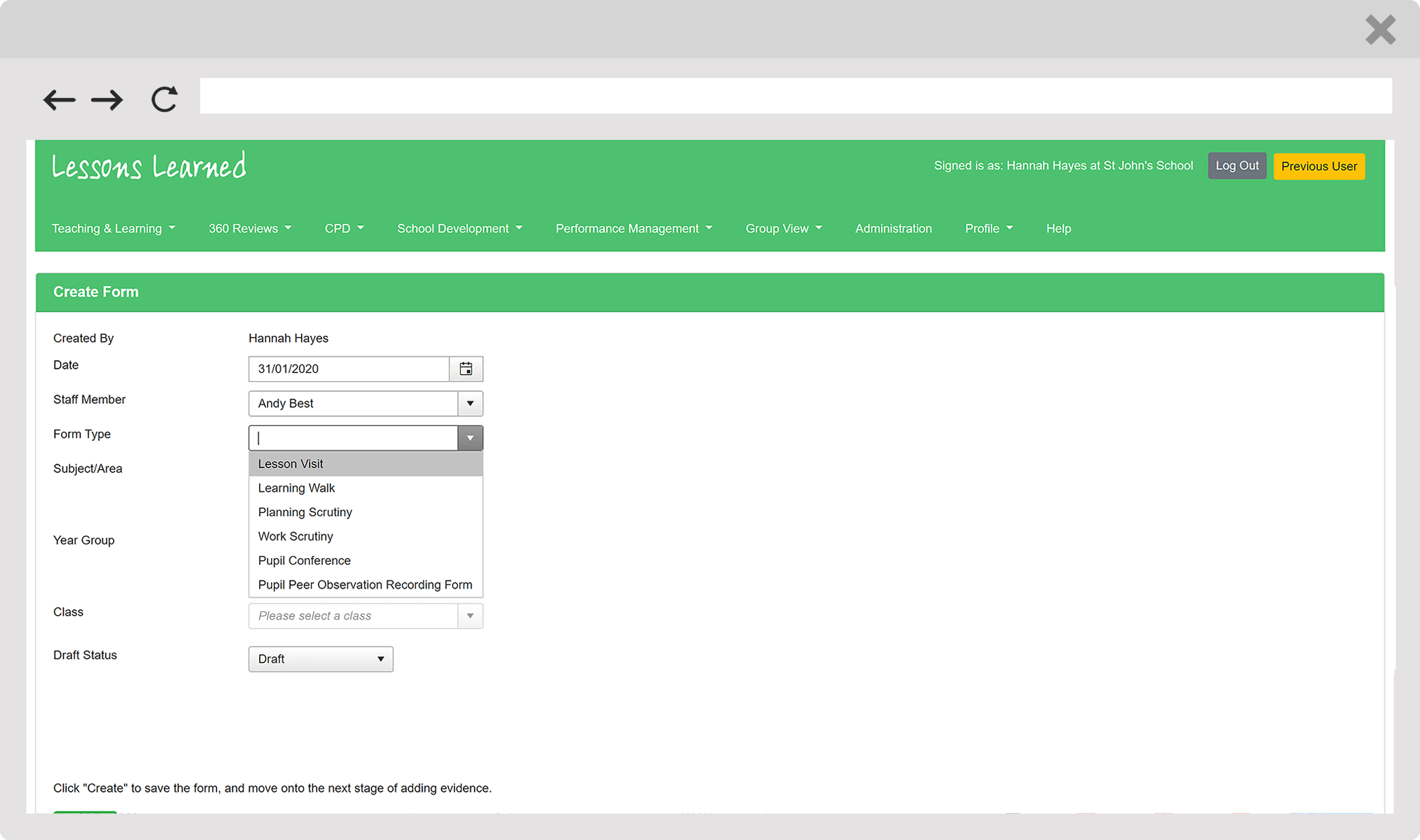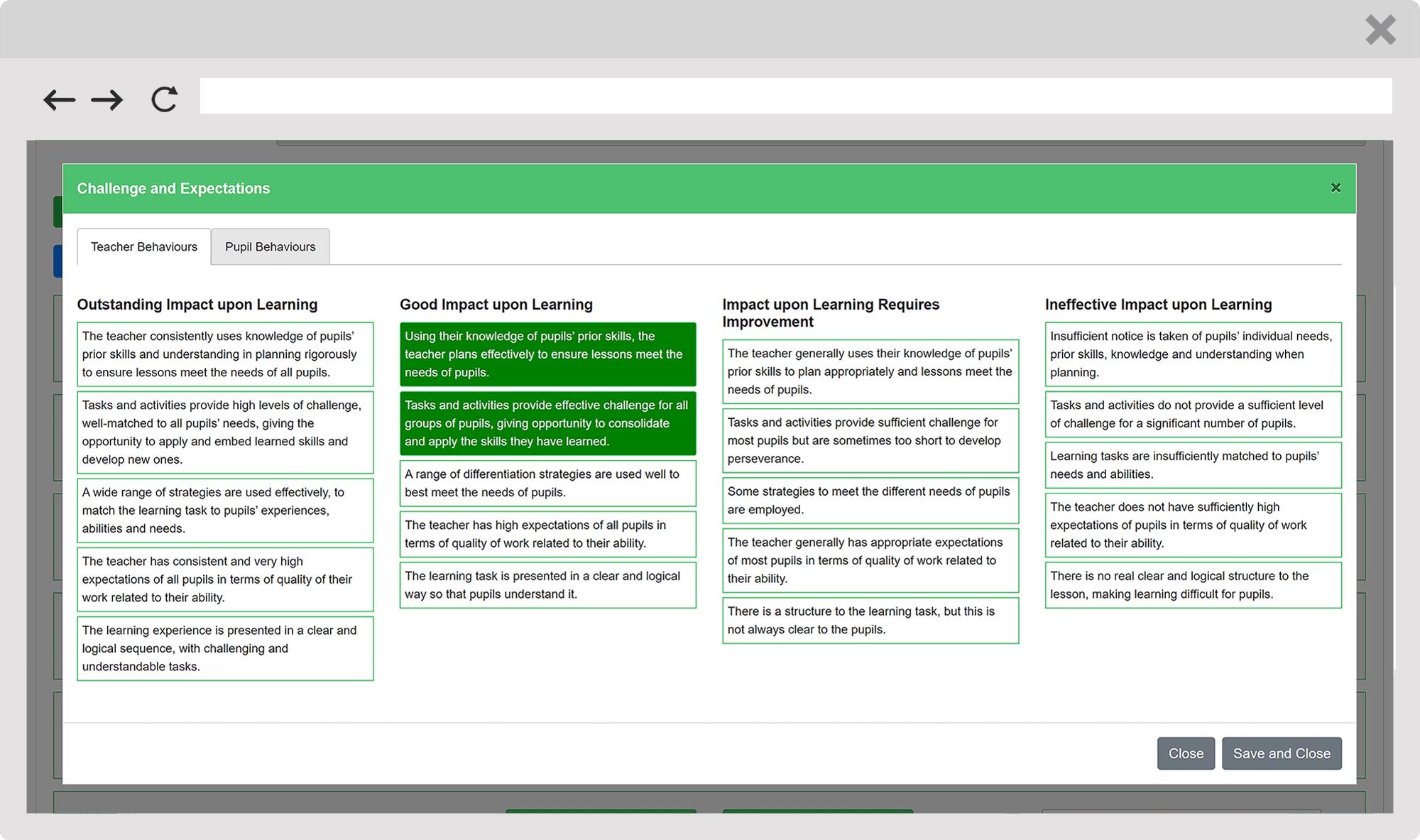How to Ensure an Effective Lesson Visit

- Plan the visit together. In order to be truely developmental, lesson visits or observations should be ‘done with’, not ‘done to’. Select a pre-determined area of focus based on prior knowledge of an individual’s practice and/or the school’s focus for that term.
- Make use of a common framework. A school system which has agreed descriptors and judgement criteria, working protocols and clearly defined expected outcomes will be in a very strong position to influence teaching positively.
- Be an active observer. Talk to pupils to gauge their opinion and don’t just rely on one source of evidence (i.e. the lesson itself). Ask to see books and lesson plans. Make notes on everything seen (remembering to record strengths as well as development points) and refine these after the observation.
- Evaluate outcomes together. Schedule in a ‘Professional Learning Conversation’ after the lesson visit. Share draft notes beforehand so that both parties have chance to reflect before the meeting.
- Agree next steps. Lesson visits are pointless if it doesn’t provide the observed staff member with actionable development points. Consider CPD and what training might be beneficial.
Lesson Visits Made Simple with Lessons Learned
(Click on the images to enlarge them!)
Lesson visits, lesson observations, teacher observations… whatever you call them, you can record them in Lessons Learned. With an optional, comprehensive framework included (based on the latest Ofsted criteria), Lessons Learned can help to ensure that your lesson visits drive real school improvement.
Not grading? No problem!
If you’re looking for a tool that’s developmental, not judgemental, Lessons Learned has a lot to offer.
1
Select the type of monitoring you’d like to complete. Lessons Learned can be set up with your own forms and frameworks or you can use ours.
2
Choose your area of focus. Add comments as you observe and support your commentary with clickable descriptors that help you to quickly identify what has been seen and what hasn’t. Pick an overall judgement if applicable, or simply remove judgements from your forms.
3
End the visit by highlighting development points and strengths. Categorise these to show trends across the school and identify best practice.
4




